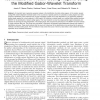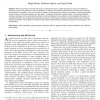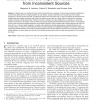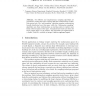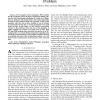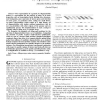88
Voted
TCBB
2008
15 years 13 days ago
2008
An important topic in genomic sequence analysis is the identification of protein coding regions. In this context, several coding DNA model-independent methods based on the occurren...
108
click to vote
TCBB
2008
15 years 13 days ago
2008
When accounting for structural fluctuations or measurement errors, a single rigid structure may not be sufficient to represent a protein. One approach to solve this problem is to r...
134
Voted
TCBB
2008
15 years 27 days ago
2008
A genetic map is an ordering of genetic markers calculated from a population of known lineage. Although, traditionally, a map has been generated from a single population for each s...
121
click to vote
TCBB
2008
15 years 27 days ago
2008
When aligning biological sequences, the choice of scoring scheme is critical. Even small changes in gap penalties, for example, can yield radically different alignments. A rigorous...
110
click to vote
TCBB
2008
15 years 27 days ago
2008
Two efficient and complementary sampling algorithms are presented to explore the space of closed clash-free conformations of a flexible protein loop. The "seed sampling" ...
109
Voted
TCBB
2008
15 years 27 days ago
2008
110
click to vote
TCBB
2008
15 years 27 days ago
2008
The incomplete perfect phylogeny (IPP) problem and the incomplete perfect phylogeny haplotyping (IPPH) problem deal with constructing a phylogeny for a given set of haplotypes or g...
103
Voted
TCBB
2008
15 years 27 days ago
2008
The representation of a genome by oligonucleotide probes is a prerequisite for the analysis of many of its basic properties, such as transcription factor binding sites, chromosomal...
105
Voted
TCBB
2008
15 years 27 days ago
2008
Abstract-- The trans-genomic query (TGQ) problem -- enabling the free query of biological information, even across genomes -- is a central challenge facing bioinformatics. Solution...
109
Voted
TCBB
2008
15 years 27 days ago
2008
Split networks are increasingly being used in phylogenetic analysis. Usually, a simple equal-angle algorithm is used to draw such networks, producing layouts that leave much room f...
